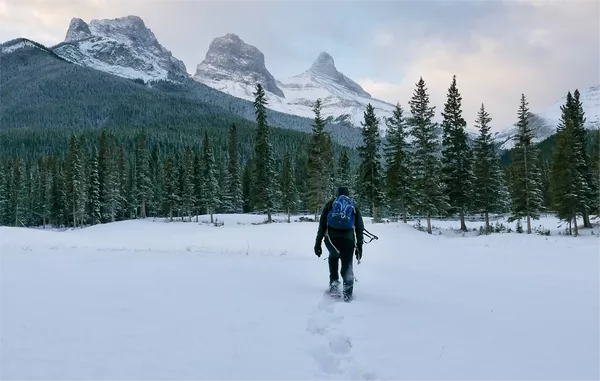As outdoor enthusiasts, hikers are undeterred by the chill of winter. In fact, for many, the colder months offer unique opportunities to explore trails draped in snow, witness breathtaking winter landscapes, and experience a serene wilderness few others dare to venture into. However, to fully savor the beauty of winter hiking, one must be well-prepared, particularly when it comes to dressing appropriately for the cold. In this comprehensive guide, we’ll delve into the nuances of dressing for cold weather hiking, ensuring your comfort, safety, and enjoyment on the trails.
Understanding Layering: The Key to Warmth and Comfort
The cornerstone of dressing for cold weather hiking is mastering the art of layering. Layering allows you to adapt to changing temperatures and activity levels, keeping you warm and dry throughout your hike. A well-structured layering system typically consists of three main components: base layers, insulating layers, and outer layers.
Base Layers: Moisture Management and Insulation
The base layer is your first line of defense against the cold. Its primary function is to wick moisture away from your skin, keeping you dry and comfortable. Opt for moisture-wicking materials such as merino wool or synthetic fabrics like polyester or nylon. Avoid cotton, as it retains moisture and can leave you feeling damp and chilled.
Additionally, base layers provide a degree of insulation. They should fit snugly against your skin without restricting movement. Choose a weight appropriate for the conditions – lightweight for milder temperatures and heavyweight for extreme cold.
Insulating Layers: Trapping Heat Close to the Body
Insulating layers add warmth by trapping heat close to your body. Common insulating materials include down and synthetic fills, each offering distinct advantages. Down is exceptionally lightweight and compressible, providing superior warmth-to-weight ratio, while synthetic fills retain insulation properties when wet, making them ideal for damp conditions.
Fleece jackets and insulated vests are versatile insulating layers that can be added or removed as needed. Multiple thin layers are often more effective than a single thick layer, allowing for better temperature regulation.
Outer Layers: Protection Against the Elements
Outer layers, or shell layers, shield you from wind, rain, and snow. They should be waterproof, windproof, and breathable to prevent moisture buildup while allowing sweat to escape. Look for jackets and pants made from waterproof materials such as Gore-Tex or eVent.
Depending on the conditions, choose between hard shell and soft shell outer layers. Hard shells offer maximum protection against harsh weather, while soft shells provide greater breathability and flexibility for high-intensity activities.
Head, Hands, and Feet: Extremities Matter
Properly protecting your head, hands, and feet is crucial for staying warm and comfortable on cold weather hikes. A warm, moisture-wicking hat or beanie helps retain heat and prevent heat loss through your head. Consider a balaclava for additional face and neck protection in severe cold.
Insulated gloves or mittens are essential for keeping your hands warm and dexterous. Look for waterproof and windproof options with added grip for handling trekking poles or navigating icy terrain.
For footwear, opt for insulated, waterproof boots with good traction to prevent slips and falls. Consider wearing gaiters to keep snow out of your boots and pants, further enhancing warmth and comfort.
Accessories: Extra Essentials for Cold Weather Comfort
In addition to the core layers, several accessories can enhance your comfort and safety during cold weather hikes. Invest in moisture-wicking socks to keep your feet dry and blister-free. Pack extra layers, such as a lightweight down jacket or fleece pullover, in case of sudden temperature drops.
A quality backpack with ample storage allows you to carry essentials like water, snacks, a map, and a first aid kit. Don’t forget to bring along a reliable headlamp or flashlight, as winter days are shorter, and darkness falls quickly.
Final Tips for Cold Weather Hiking Success
Before embarking on a cold weather hike, be sure to check the weather forecast and trail conditions. Dress in layers, starting with a moisture-wicking base layer, followed by insulating layers, and topped with waterproof outer layers. Pay special attention to protecting your head, hands, and feet, as well as carrying essential accessories for comfort and safety.
Stay hydrated and fuel your body with high-energy snacks to maintain warmth and stamina. Take regular breaks to rest and refuel, and be mindful of signs of hypothermia or frostbite, such as shivering, numbness, or disorientation.
By following these guidelines and dressing appropriately for the conditions, you’ll be well-equipped to tackle the challenges of cold weather hiking and fully appreciate the beauty of winter landscapes. So bundle up, hit the trails, and embark on a cold weather adventure like no other.

